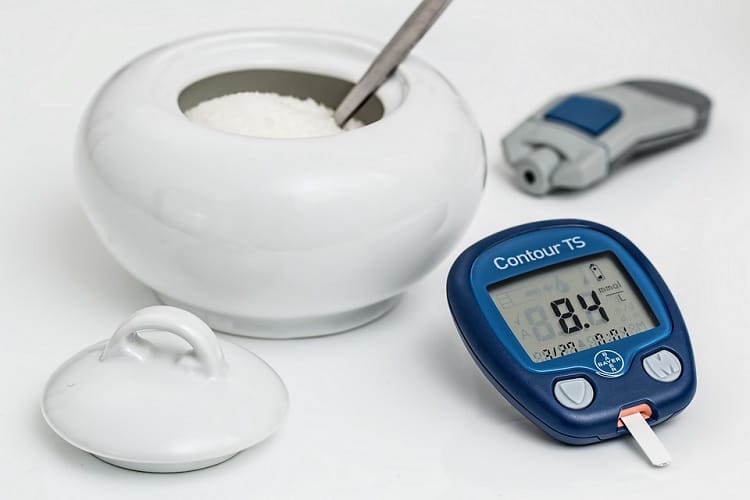Diabetes is the seventh leading cause of death in America, according to the Centers for Disease Control and Prevention (CDC). However, only about 10% of the United States population has diabetes. Medicare beneficiaries account for more than half of the pool of American citizens with the life-altering disease.
According to the Kaiser Family Foundation, the average annual cost of insulin for a Medicare beneficiary went from $862 in 2007 to nearly $4,000 in 2016, calculating for a 358% cost increase[1]. While many factors play a part in rising healthcare costs, the rate of increase in insulin prices is anything but reasonable, giving that since 2007, the value of $1 has seen a rise of less than 16%.
However, thanks to a new Part D model, insulin prices are being slashed in 2021 for Medicare beneficiaries. Medicare beneficiaries all around the country will start to see some of the lower insulin copays they have seen in decades on top insulins such as Lantus, Novolog, Levemir, Humalog, and more.

The 2021 Part D Senior Savings Model
The Centers for Medicare and Medicaid Services (CMS) announced on May 26, 2020, that a new model of Medicare Part D would take effect in 2021. The official title of the new Part D model is the Part D Senior Savings Model. Standalone Part D plans and Medicare Advantage Prescription Drug plans can participate in the Model, and nearly 1,800 plans have already applied.
The plan sponsors that agree to the terms of the Model will offer insulin to their beneficiaries at a maximum copay of $35 per month starting in 2021. Although plans can offer insulin at a lower copay, $35 is the highest a 30-day supply of insulin can cost under a Model Part D plan. Therefore, under a Model plan, a beneficiary could not pay more than $420 a year on insulin – a massive decrease in cost.
It is important for Medicare beneficiaries to know that enrollment in the Part D Senior Savings Model is not a requirement for drug manufacturers and Part D plan sponsors. However, the three drug manufacturers most known in the diabetic community, Eli Lilly, Sanofi, and Novo Nordisk, have already confirmed their participation. Also, the Model does not apply to Part D Extra Help enrollees, likely because their drug costs are already lowered.

Eligibility requirements for drug manufacturers and Part D plan sponsors
Drug manufacturers who market and sell a drug containing insulin can participate in the Part D Senior Savings Model. If they wish to participate, the drug manufacturers must agree to include all their insulin products within the Model.
Part D plan sponsors must agree to charge a maximum $35 copay for a 30-day supply of any insulin covered on the plan’s formulary. The plan must also cover at least one pen dosage and at least one vial dosage form for each covered insulin. Rapid-acting, short-acting, long-acting, and intermediate-acting insulins will all be available under the Model.
Model Part D plans cannot raise the maximum copay based on pharmacy either. Therefore, $35 is the maximum a 30-day supply of insulin can cost under a Model plan at a preferred pharmacy, non-preferred pharmacy, or mail-order pharmacy.
Today’s Part D program vs. the 2021 Part D Senior Savings Model
Currently, whether it is a standalone Part D plan or one within a Medicare Advantage plan, all Part D plans have four stages – deductible, initial coverage, coverage gap, and catastrophic coverage. While in the deductible stage, the Medicare beneficiary pays 100% of the drug’s cost up to the plan’s deductible. As of 2020, the maximum a Part D plan’s deductible can be is $435.
Once the total deductible is met, the beneficiary will move to the initial coverage stage and pay either a copay or coinsurance for his or her covered drugs. The cost will vary by drug, brand-name vs. generic, manufacturer, tier, and more. Under most Part D plans, insulin is a tier-three or higher drug, usually meaning it has a higher coinsurance.
After the beneficiary and the Part D plan have paid $4,020 in drug costs for the year, the beneficiary begins the coverage gap phase, where beneficiaries pay no more than a 25% coinsurance. According to CMS, for most Medicare beneficiaries, the cost of insulin rises during the coverage gap. Once the total costs reach $6,350 for the year, the beneficiary moves into the catastrophic coverage stage, where he or she pays around 5% for the total cost of drug.
While the current Part D plan structure leaves the enrollee vulnerable to fluctuating insulin costs, the new Part D Senior Savings Model creates a predictable copay of $35 or less throughout the entire year regardless of the stage.

Medicare Part B vs. Medicare Part D insulin
There are two main ways a diabetic can receive insulin – by injection or by infusion pump. How the insulin is administered will dictate which part of Medicare covers the prescription. Medicare Part D covers self-administered insulin injections.
Medicare Part B covers durable medical equipment such as wheelchairs, oxygen tanks, and infusion pumps. Therefore, if a Medicare beneficiary receives their insulin through a pump, Medicare Part B will cover the insulin prescription, as well.
The Part D Senior Savings Model does not apply to insulin purchased under Medicare Part B. Medicare beneficiaries who buy their insulin under Part B will still be charged a Part B coinsurance of 20% in 2021. Many Medicare beneficiaries supplement their Medicare with a Medicare Supplement plan covering the Part B coinsurance for them. Therefore, their insulin costs are already inexpensive.
Preparing for the new Model Part D plans
According to CMS, information for the new Model Part D plans will be released in September 2020. Medicare Advantage and Part D plan sponsors are also required to mail an Annual Notice of Change by the end of September to each beneficiary stating how their current plan will change for the next year. Medicare beneficiaries should review their Annual Notice of Change, so when it comes time to review the new Model Part D plans, they know if they should switch plans. However, most insulin-dependent diabetics will find savings when switching to a Model Part D plan.
Annual Election Period
There is only one guaranteed Medicare enrollment period in which Medicare beneficiaries can change Part D plans, which is the Annual Election Period. The Annual Election Period always starts on October 15th and ends on December 7th. During this period, Medicare beneficiaries can use the Medicare Plan Finder Tool to review all the Part D plans offered in their area.
This year, Medicare will add a filter to the Plan Finder Tool that filters out any non-Model Part D plans, allowing diabetic beneficiaries to focus on the plans that will likely offer the most savings in drug costs. CMS believes that Model Part D plans will be available in every state.
Any plans enrolled in during the Annual Election Period will start on January 1, 2021. Medicare beneficiaries who miss the December 7th deadline will have to wait for the following Annual Election Period to enroll in a Model Part D plan, which means another year of high insulin costs. However, Medicare Advantage enrollees have another chance to change almost right after the Annual Election Period.
Medicare Advantage Open Enrollment Period
The Medicare Advantage Open Enrollment Period begins on January 1st and ends on March 31st each year. During this period, Medicare Advantage enrollees can either switch Medicare Advantage plans or drop their plan and enroll in a Part D plan.
If for some reason, a Medicare Advantage beneficiary misses the Annual Election Period, they can use the Medicare Advantage Open Enrollment Period to switch to a Model Medicare Advantage or Part D plan. However, changes made during this period take effect on the 1st of the following month in which you apply. The best way to avoid unnecessary high out-of-pocket insulin costs in 2021 is to switch to a Model Part D plan during the Annual Election Period in 2020.
Author: Danielle K. Roberts is the Vice President and co-founder at Boomer Benefits, where her team of experts help baby boomers with their Medicare decisions nationwide.
Sources:
[1] https://www.kff.org/medicare/issue-brief/how-much-does-medicare-spend-on-insulin/

